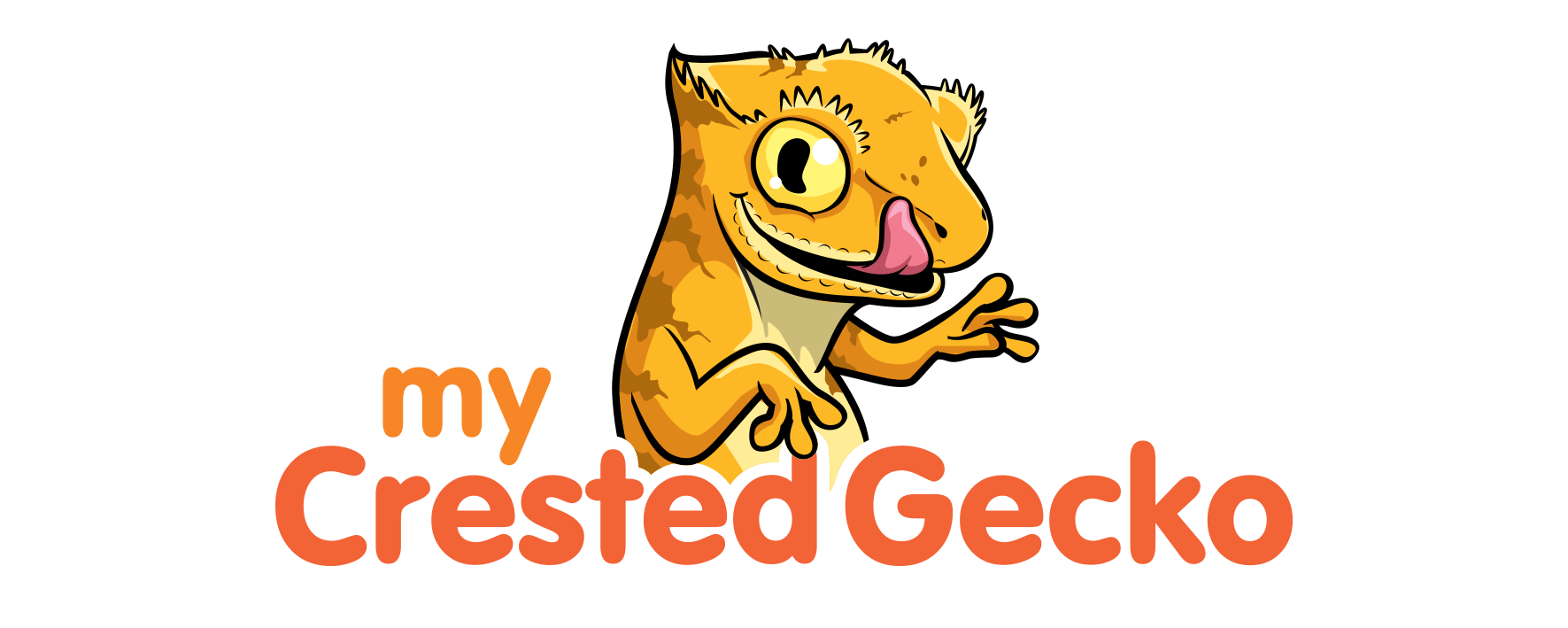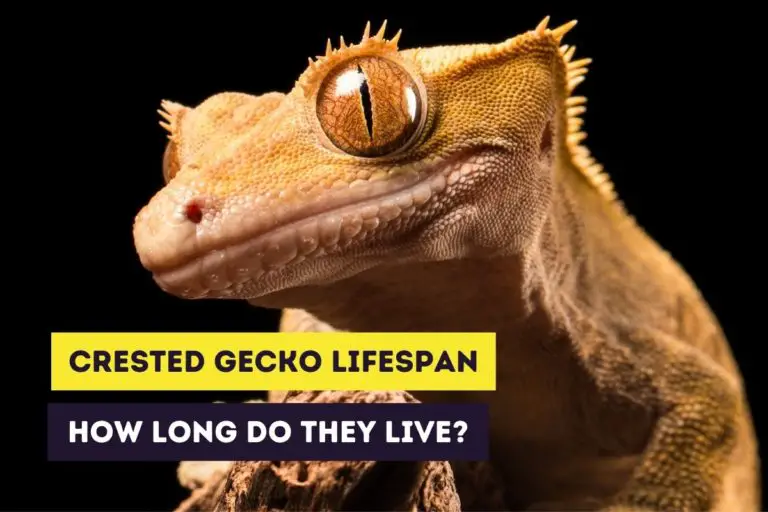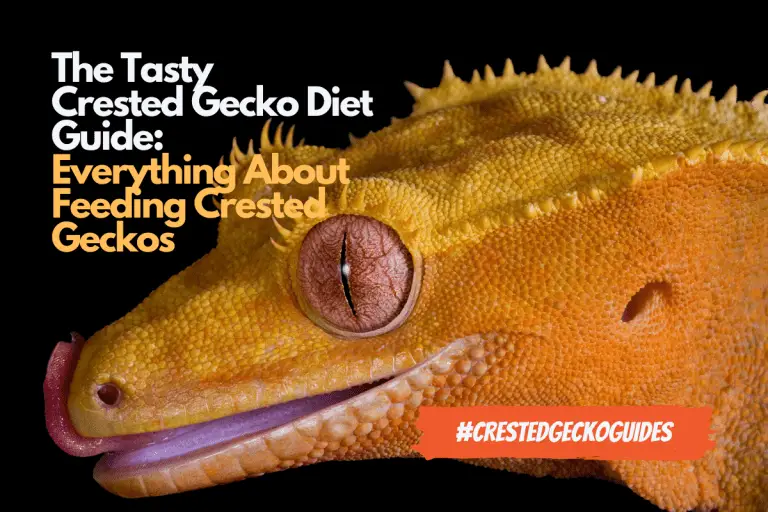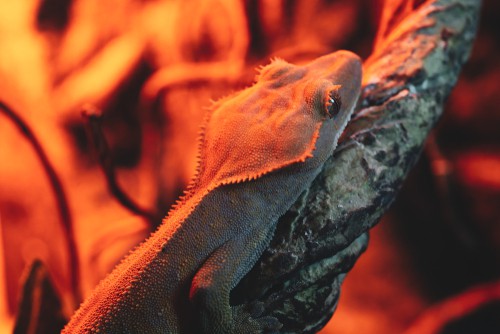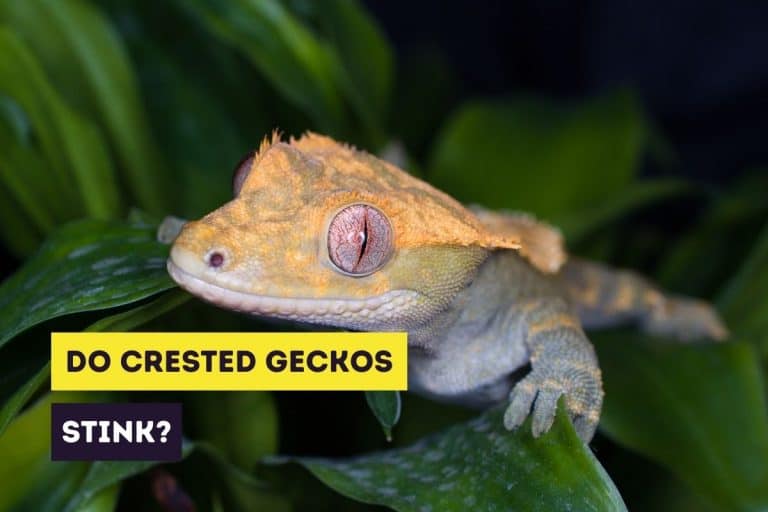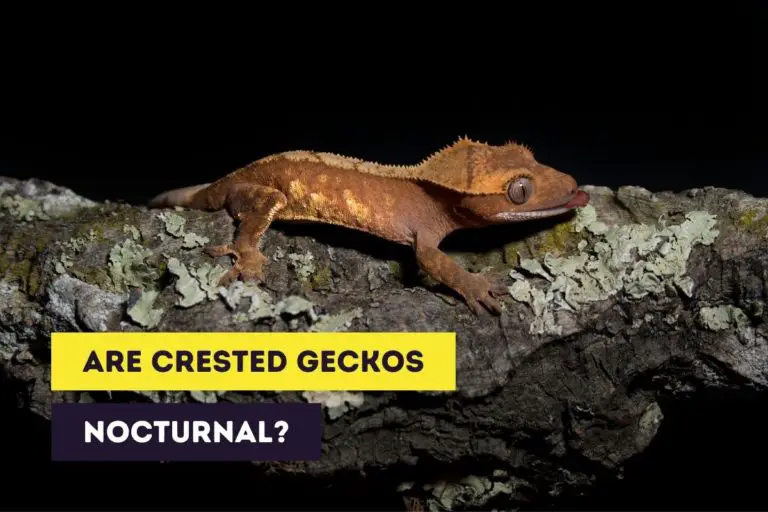Crested Gecko Care Guide | Taking Care of a Crested Gecko
You’re reading Crested Gecko Care in Crested Geckos: The Complete Guide for Noobs. Quickly navigate to other chapters: Intro | Preparing for a Crested Gecko | Buying a Crested Gecko | Crested Gecko Care
You’ve bought a crested gecko and are ready to start caring for your little crestie. Crested geckos are quite low-maintenance pets and their care is quite easy compared to some other pets. They are an excellent pet for anyone interested in reptiles, more in particular in lizards, and who want to keep a friendly and safe (first) reptile.
Crested gecko care consists of six pillars. You need to handle them properly and provide a balanced diet. Crested geckos also need to be housed in a large enough terrarium (with appropriate temperature and humidity). You’ll also need to clean their terrarium at least once a month and need to get them examined by a vet if necessary.
This guide concerns the adult crested gecko but most of the information is also applicable to baby and juvenile crested geckos. There are only slight differences that have to do with their smaller size.
If you’re interested in stickers or other products of crested geckos, you can always visit our Etsy Shop, which is called Artful Animalia. We currently only send stickers in the United States. If you’re interested in certain crested gecko-related products, don’t hesitate to contact us.
Although I won’t mention it further in this guide, the most important (implied) aspect of crested gecko care is that a crested gecko should be kept in alone. You can keep female crested geckos together (although some won’t even recommend doing this) but it’s advised to never keep multiple crested geckos together in one terrarium.
To give your crested gecko the best possible care, it’s important to learn all aspects of crested gecko care through answers on the most commonly asked questions. So, let’s start learning everything there is to know about crested gecko care right now!
This site contains affiliate links to products we recommend and use ourselves. We may receive a commission for purchases that you make through these links. If you’re interested in learning more about our affiliate links, please visit our (affiliate) disclaimer.
First Days
Getting your crested gecko adjusted to its home
When you bring your crested gecko to your home, allow it at least two days to adjust to the new environment before interacting with them. Place your crested gecko in their enclosure (vivarium, terrarium, cage,…) when you get back home and let them explore their enclosure without disturbing them too much. You should have already put water in its water bowl and food in the feeding bowl.
Crested geckos are tiny animals that were only recently introduced in the world of pets. They’re not the type of pet that likes to be held or cuddled for a long time, especially in the beginning. Instead of being picked up, a crested gecko would prefer to run on your arm.
You need to be very patient with crested geckos as it can take weeks for them to be completely comfortable with you. You should not attempt to handle your crested gecko the first days.
At first, your crested gecko may seem shy when you make a move. However, once it gets used to their new surroundings- sound, smell, and sights, their confidence will begin to grow, and this is when they will start to bond with you.
Getting your crested gecko adjusted to you
The following days should establish a certain routine that your crested gecko can get used to. Speak to your crested gecko and get them used to your presence. You’ll have to interact with your crested gecko regularly by taking out his food bowl and giving him fresh food and water. When you notice that your crested gecko is interested in you and doesn’t run and hide when you open the door of the enclosure, you should take the first steps in handling and taming.
These first steps are fairly simple and you shouldn’t wait too long to take them. Open the enclosure door and reach in the enclosure with your hand. Let it hang in for a few minutes. At this point, you shouldn’t try to grab your crested gecko. Just let it hang in the enclosure. Your crestie might want to explore your hand. Don’t try to take the crested gecko out of the enclosure at this point. Slowly take your hand outside the enclosure and close the door.
Congratulations, you can now start taming your crested gecko so you can handle him with ease.
Handling Crested Geckos
I already mentioned that crested geckos aren’t pets that will come to you and want to cuddle with you. But crested geckos can be handled. In fact, crested geckos are easy to handle and for most crested geckos this is indeed the case.
But some crested geckos will not tolerate handling and will always run away when you try to reach for them. The rare case will bite you when you try to handle him.
If you have a crested gecko that doesn’t like to be handled, don’t be upset. You can take little steps in getting him used to being handled. But if this doesn’t work, you – quite frankly – just have to deal with it. Crested geckos don’t – unlike dogs and cats – have a long history as domesticated pets.
First steps
You might want to take your little baby crested gecko in your hand and get it used to you as soon as possible. It’s always a good idea to get your gecko used to being handled as soon as possible but it’s advised not to handle baby crested geckos that are less than two weeks old. Baby crested geckos are very jumpy and will get hurt if they fall on the floor. Once your gecko weighs 8 to 15 grams, it’s usually safe to handle him.
Step-by-step plan
Only start with handling after two weeks so your crested gecko is used to its new environment and to you.
How to handle a crested gecko?
Slide your finger underneath the chin
Don’t go grabbing your crested gecko but let it come to you. Gently slide a finger underneath the chin. Usually, your crested gecko will start moving up your finger and up your hand.
Lift your hand
Gently lift up your hand when your crested gecko is on it. This will encourage it to crawl up your arm and shoulder like a tree branch.
Sit down on the floor or bed
Since a fall from a height can cause injuries, it’s best to go sit down on the floor or a soft bed when handling a crestie.
Put your crested gecko back
When you’re handling time is up, move your crested gecko back into the enclosure. Place it near the ground of the enclosure or near the walls of it. Your crestie will crawl back in the enclosure without a problem.
The dos and don’ts of handling a crested gecko
Dos of handling a crested gecko
- handle your crested gecko during the day or evening when he’s less active
- ensure the room is quiet to keep him calm
- make sure that the room is enclosed so your crestie can’t escape
- use ths handling time to monitor the health and weight
Don’ts of handling a crested gecko
- force your crested gecko to be handled
- make any sudden noises or movements
- grab your gecko, squeeze him, or hold it by its tail
- let your crestie fall from a great height or onto a hard surface
- be afraid for a bite – they rarely bite and it almost never hurts or breaks skin
How Long Should Playtime Last?
Handle a new crestie for just 1-2 minutes every other day – pop him back in his tank when he starts to seem uncomfortable. Be consistent with your handling but only work in short sessions to minimize stress. Once he’s fully settled in, you can increase the time to 15 minutes or so. After about 1 month, you should have a tame crested gecko who enjoys interacting with you.
Safety tips for handling
Handling a tiny animal like a crested gecko requires some attention from you. You’ll need to be very careful when handling your crestie, especially in the beginning when you don’t know how your gecko will react.
To help you handle your crested gecko safely, I’ve gathered some handy safety tips for you:
- sit on the ground or bed: crested geckos are (semi-)arboreal and live most of their lives in trees and on plants. They might leap into the air or jump away from you when they’re scared. To avoid a high fall on the ground, sit down when handling your crestie and avoid falls from a high height. And don’t go walking with your gecko on you.
- hold out your hand when it jumps: closely related with the previous tip, it’s best to provide a “landing” platform when your gecko jumps away from you. In nature, crested geckos will land on tree branches but in captivity, they need something else to hang on.
- never grab your crested gecko by the tail: the tail of a crested gecko is very delicate and your crestie has a natural defense mechanism that drops the tail when in danger or when stressed. The tail won’t grow back! When you grab your crestie by its tail the instinct kicks in and chances are really high that the tail will come off.
Some “handy” handling tips
These tips are not really safety related but are really useful to know when you handle a crested gecko:
- keep a paper towel in the vicinity: your crested gecko might poop on you when it’s climbing over you. Don’t make a fuss about it and accept that this is natural. Just wipe the poop with the paper towel and throw it in the garbage bin.
- understand the vocalizations: crested geckos can make squeaky and even chirping sounds. When you notice a squeak coming out of your crestie it’s usually a sign that they want to be left alone. In such a case, let them go back to their enclosure and relax.
Feeding Your Crested Gecko
Crested geckos are crepuscular and nocturnal creatures and should be fed in the evening. The uneaten food should be removed after 24 hours to prevent the buildup of bacteria and to avoid nasty smells.
Diet basics
Crested geckos are omnivores. That means their diet includes both animal and plant-based food sources – namely, insects and fruit. In the wild, they may also consume nectar and pollen from flowers. Most crested gecko owners don’t restrict the diet of their crestie to insects and fruits. In fact, most cresties in captivity are fed powdered diets, meal-replacement diets, and the occasional insect, fruit, and worm.
Dietary schedule
Adult crested geckos don’t need to eat every day and can go for a short period without food. A good feeding schedule will consist of feeding your crested gecko 3 times a week.
The exceptions to this general guideline are hatchlings and juveniles. To ensure that your little crestie grows up to a healthy adult, daily feeding is allowed.
A good schedule will consist of feeding:
- meal replacement powder or granulated food: every few days or 3 times a week
- insects: once or twice a week
- fruits and worms: once or twice a month
Crested Gecko Health
Health problems
Crested geckos are quite durable animals that don’t get sick that often. A crested gecko can live a very long life in captivity, provided that they’re cared for properly. In fact, most health problems are a direct result of inadequate care of your crested gecko. The most common health problems of crested geckos are tail loss (often caused by stress) and the metabolic bone disease (often caused by improper nutritional balance).
Finding a vet
It’s better to already know a vet that’s specialized in reptiles, and if possible in geckos, so you don’t have to start looking for one when you need a vet. Most vets are knowledgeable about “normal” pet care, like treating dogs and cats.
So, depending on the region you live in, finding a specialized vet can be difficult. If you don’t know any vets, you should definitely start your search at the Association of reptilian and amphibian veterinarians. They have a handy search function to find an associated vet in the entire world.
When you still can’t find a vet in your vicinity, you can look in one of the following locations:
- pet stores: when you’ve got a pet store that sells reptiles, they usually know at least one vet in the vicinity that can treat reptiles. Don’t be afraid to ask to give this contact information.
- hobbyists: fellow hobbyists are often a great way to gather information about reptiles. They also know which vets are specialized in which kind of reptiles.
- herpetological societies: a herpetological society is a group of people that’s really excited about reptiles. They’re a more structured entity that can accept members from a certain region or from around the world. If you don’t know any hobbyists in your neighborhood, you can try to find some help from the local herpetological society.
What’s Next?
Congratulations, you’ve finished this guide! Now you can continue to learn more about crested geckos in our advanced articles about breeding crested geckos and baby and juvenile crested gecko care or one of the more in-depth articles about the crested gecko diet, the vivarium plants, the appropriate housing for crested geckos, the right substrate, and cleaning the crested gecko terrarium.
